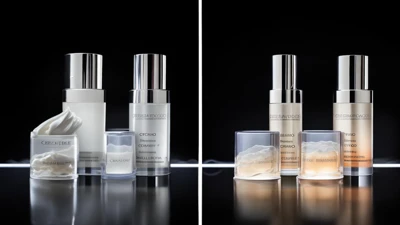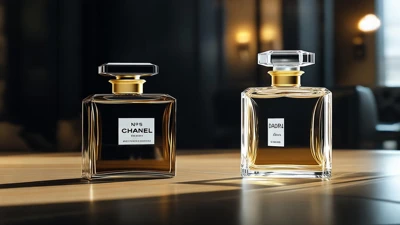
1. An Overview of Anti-Aging Therapies
The desire for youthful skin has sparked new developments in dermatology. Among these, LED light therapy and chemical peels stand out as leading non-invasive solutions. They share the goal of minimizing wrinkles. However, their approaches, results, and user satisfaction levels are not the same. Being a skincare fan and having used at-home LED masks, I can't help but question how they measure up against procedures like chemical peels. This essay analyzes the scientific basis, clinical data, and everyday applications of both treatments to determine their effectiveness in reducing wrinkles.
2. Grasping the Science Behind Every Treatment
2.1 LED Light Healing: Leveraging the Power of Light
LED therapy relies on precise light wavelengths to stimulate cell behavior. Red light in the spectrum of 620–750 nm reaches the dermis to enhance collagen production. Blue light in the 405–420 nm range destroys bacteria that cause acne. The use of near-infrared light from 850 to 1000 nm helps to lower inflammation and supports healing of tissues. A study from 2019 in the Journal of Cosmetic Dermatology demonstrated that red LED therapy enhanced collagen synthesis by 30% in fibroblasts. This makes it a potential candidate for wrinkle treatment.
2.2 Chemical Peels: Cellular-Level Exfoliation
Acids such as glycolic, salicylic, and trichloroacetic are applied during chemical peels to exfoliate the epidermis. This process reveals fresh, smooth skin underneath. The dermis is targeted by deeper peels, which stimulate collagen remodeling. The benefits of medium-depth peels were reviewed in the Journal of Clinical and Aesthetic Dermatology in 2020. Damaged skin layers are removed and regenerative processes are initiated with the use of 30% salicylic acid to combat photoaging.
3. Comparative Effectiveness: Clinical Evidence
3.1 Short-Term Results
Chemical peels often show quicker visible results. A clinical trial conducted over 12 weeks demonstrated that glycolic acid peels were significantly more effective than LED treatments for wrinkle reduction. However, the gradual collagen boost from LED may provide benefits that last longer.
3.2 Long-Term Benefits
A total of 100 patients were tracked in an 18-month longitudinal study conducted in 2022. A 35% gain in skin elasticity was maintained by LED therapy users, but chemical peel users saw their results decline by 20% after they stopped the treatment. It is suggested that LED's effect on collagen over time could surpass the short-term exfoliation provided by peels.
4. Safety Characteristics and Adverse Effects
4.1 LED Session: Negligible Risks and Gradual Gains
LED treatments are non-invasive. They rarely cause side effects like temporary redness. The 2020 safety review in Dermatologic Surgery examined over 500 cases. It found no serious adverse events. Consistency is key to seeing results; it typically takes 8–12 weekly sessions to achieve optimal outcomes.
4.2 Chemical Peels: Effective but Should Be Used with Caution
There are risks of irritation, hyperpigmentation, and scarring associated with peels, especially for those with darker skin. As noted in a 2021 case study in the Journal of the American Academy of Dermatology, a 55-year-old patient suffered from post-inflammatory hyperpigmentation after a TCA peel. This underscores the need for expert supervision.
5. Cost and Accessibility
5.1 LED Light Therapy is Affordable, but it Takes a Long Time
While at-home LED devices typically cost $100–$400, the price of clinical sessions is generally $50–$200 per treatment. With 12 sessions, the costs may add up to $2,400. It is necessary to have maintenance sessions every 6, 12, or sometimes more months.
5.2 Chemical Peels: Higher Initial Cost, Maintenance Varies
Each session of superficial peels costs around $150 to $300. You may need 3 to 6 sessions as recommended. Though deeper peels can cost more than $1,000, the results tend to stay visible for a longer time. Insurance usually does not cover cosmetic procedures, and this can make the cost a barrier for some people.
6. People's Reactions and Fulfillment
6.1 Good Things Come to Those Who Wait for LED Therapy
Skincare released a survey in 2023 showing that.. In a sample size of 1,200, 68% of LED users observed enhanced skin texture within two months. Meanwhile, 42% voiced concerns about the sluggish pace of improvement. Months were needed, but I achieved results. My crow's feet are less noticeable, with no downtime involved.
6.2 You'll See Immediate Changes After Chemical Peels, but Regret Is Not Ruled Out
Seventy-eight percent of peel users claimed they saw rapid wrinkle reduction. At the same time, thirty-four percent said they dealt with extended redness or peeling. According to a Reddit user, 'The first time I peeled, my face felt raw for seven days, yet the results were rewarding.'
7. The Relationship Between Skin Type and Daily Habits
7.1 LED Designed for Sensitive Skin
LED is gentle and therefore ideal for use on sensitive or rosacea-prone skin. According to a 2021 study in JAMA Dermatology, red LED therapy was effective in reducing inflammation for 85% of individuals with erythema.
7.2 Strong Skin Starts with Two Peels
People whose skin falls under Fitzpatrick categories IV through VI may experience more risks with chemical peels. A 2020 case series in Skin Therapy Letter recommended that these patients should avoid medium-depth peels because of the risk of hyperpigmentation.
8. Emerging Patterns and Creative Breakthroughs
8.1 Combination Therapies
For enhanced outcomes, dermatologists are turning to a combination of LED and peels. In a 2023 pilot study featured in Lasers in Surgery and Medicine, researchers noted that LED therapy following peels shortened recovery time by 40% and improved collagen synthesis.
8.2 Personalized Skincare
Improved understanding of genomics may lead to individualized treatment plans. Optimizing outcomes is possible by selecting LED wavelengths according to genetic markers associated with collagen deficiency.
9. Delivering Self-Reflections and Useful Tips
After six months of LED therapy, I see its benefits in terms of convenience and safety, but progress takes time. While my friend saw amazing changes from the glycolic peel, she spent a week avoiding social engagements. Peels may be sufficient for people who need instant results and tough skin. When considering prolonged anti-aging solutions, LED's safety and maintenance perks are unmatched.
10. A Word From Beautyvs
For quick wrinkle removal, chemical peels are ideal. For lasting collagen benefits, LED therapy is the way to go. To determine the ideal option, consider your skin type, your ability to manage downtime, and your financial constraints. Research is advancing. It suggests that combining both modalities under professional advice could be the most effective strategy.














